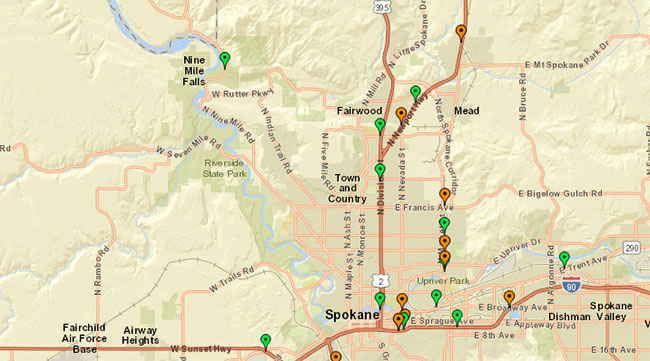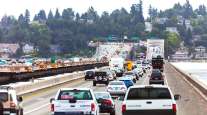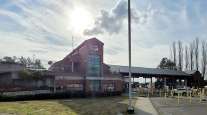Spokane, Wash., to Get $200 Million in Transportation Funds
The Washington state Senate and House both passed $10 billion, two-year transportation spending bills in the last two weeks, with nearly $200 million dedicated to projects in the Spokane area.
Most of this money is allocated toward construction of the North Spokane Corridor freeway, but funding also is reserved for rail projects, a freight facility at the airport, Spokane Transit Authority’s Central City Line and bikeways related to work on East Sprague Avenue.
With $15 million separating the two bills, however, the projects aren’t assured. A conference committee of legislators will have to meet to reconcile the differences, which could take weeks. The legislative session is scheduled to end April 28.
As the bills stand, the largest chunk of Spokane’s share this biennium is for the long-planned north-south freeway, now called the North Spokane Corridor. Legislators have set aside $183.5 million for the project this session.
Most of that money — $164 million — comes out of the $2.1 billion the Legislature is doling out from the Connecting Washington fund, a gas-tax supported program approved in 2015. The project is also slated to receive $7.8 million from the transportation partnership account, which also is generated by the state’s gas tax. Another $6.7 million will go to the project from the “nickel” account, a 5-cent per gallon gas tax created in 2003 by the Legislature that has mainly gone to highway projects. And $5 million is coming from the special category C account, a 0.75-cent per gallon gas tax that is reserved for high-cost highway projects.
"The Washington state Senate and House both passed $10 billion, two-year transportation spending bills in the last two weeks, with nearly $200 million dedicated to projects in the Spokane area." @SpokesmanReview https://t.co/4u8v8A84Ky — Spokane Transit (@spokanetransit) April 9, 2019
The $1.5 billion freeway is expected to be complete in 2029, and the 10.5-mile road is expected to carry 150,000 vehicles a day, comparable to I-90.
The project to replace a BNSF rail crossing at Pines Road with an underpass, and construct a roundabout or traffic signal at Pines Road and Trent Avenue, is slated to receive $2.9 million in the bills. The project, which will cost between $26 million and $29 million, is expected to make the increasingly busy intersection safer.
Pines sees an average of 16,400 vehicles every day and was rated the top road-rail conflict in the state, according to the Washington state Joint Transportation Committee. Last year, the rail crossing caused more than 27,000 hours of vehicle delays and 27 collisions at the adjacent intersection at Trent and Pines. An estimated 56 trains per day pass through the corridor, and it is projected that number will grow to 114 trains per day by 2035.

A map of all road construction projects taking place in and around Spokane, Wash.
A project that replaced an old rail spur between Cheney and Geiger Junction to serve a newly built $30 million grain loading facility on Craig Road is also set to get partially reimbursed by the Legislature.
The money goes to Highline Growers, a grain company created last year when five grain cooperatives across the Upper Columbia Basin merged. Before the merger, the cooperatives built the facility, which assembles 110-car trains on the Palouse River and Coulee City railroad track. In 2015, the Legislature agreed to spend $2.3 million on the rail spur project. This year’s spending bill said the Legislature intends to keep sending state funding to the finished project until its cost of $7.3 million is reimbursed.
The Legislature also has dedicated $500,000 for rail work related to the Spokane airport transloader facility project, which will transfer freight shipments between trucks and rail. The $2 million, 1.2-mile rail line is under construction on the West Plains and will connect with the Geiger Spur. The project is being led by the West Plains Public Development Authority.
Distributed by Tribune Content Agency, LLC




